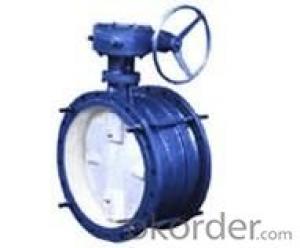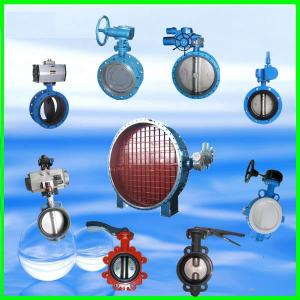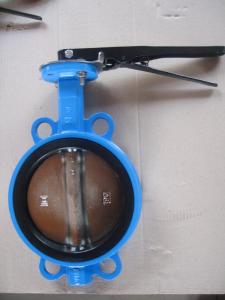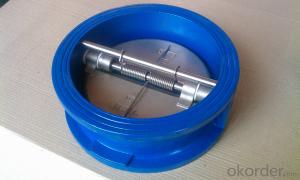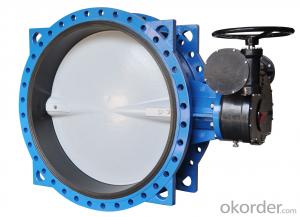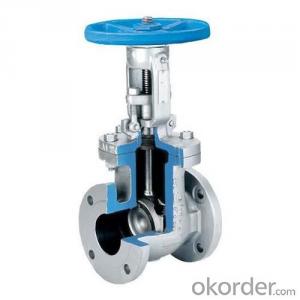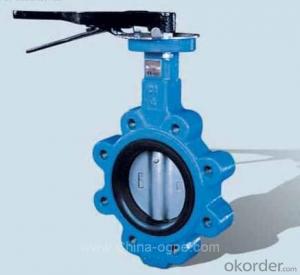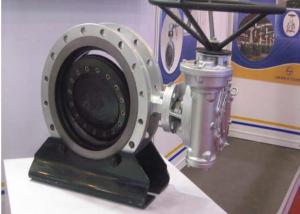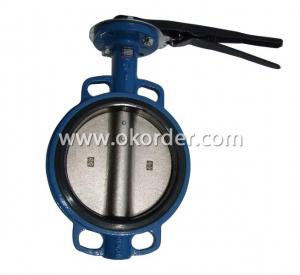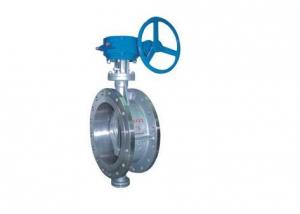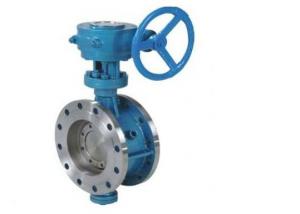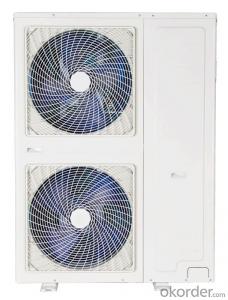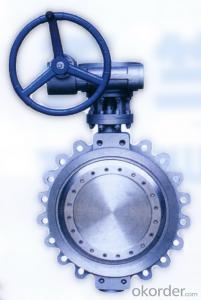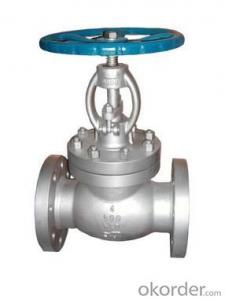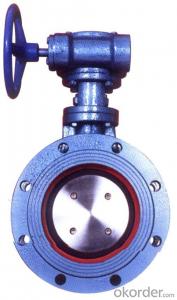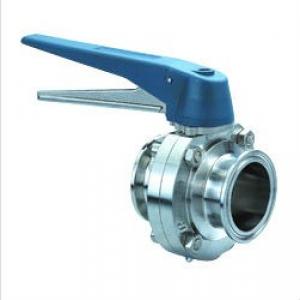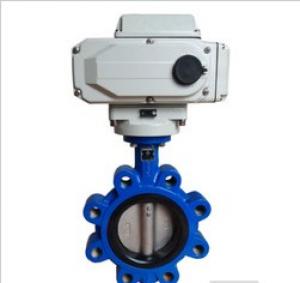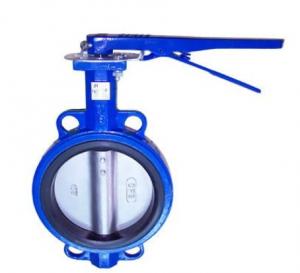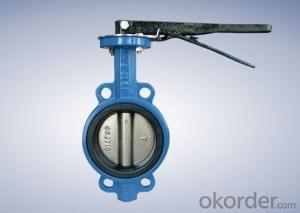butterfly valve Dual Plate Check
- Loading Port:
- China Main Port
- Payment Terms:
- TT OR LC
- Min Order Qty:
- -
- Supply Capability:
- -
OKorder Service Pledge
OKorder Financial Service
You Might Also Like
Quick DetailsStandard or Nonstandard: Standard Structure: Gate Pressure: Medium Pressure
Power: Manual Material: Casting Temperature of Media: Medium Temperature
Media: Water Port Size: DN40mm-DN300 Place of Origin: China (Mainland)
Model Number: GF4 resilient gate valves: resilient seat flange
Packaging & DeliveryPackaging Detail: air plastic bag inside/wooden box outside
Delivery Detail: 15-60days
SpecificationsDIN3352 F4 resilient seat flange gate valves
1.s:DN40-DN300 ize
2.medium:water
3.standard:DIN
4.certificate:ISO9001 CE
resilient gate valves
1.size:DN40-DN300
2.medium:water
3.certificate:ISO9001 CE
4.standard:DIN
available medium:water
working temperature:≤80oC
flange dimensions:DIN2501
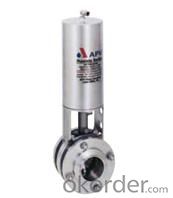
- Q:What does the butterfly valve D361H - 25C DN350 mean?
- Welded turbine butterfly valve, hard seal, material: cast steel, pressure 25KG, caliber 350MM
- Q:I am confused as to the answer of this question. Please help.Indicate the status of the mitral, tricuspid and semilunar valves (whether they are open or closd) during the various phases of the cardiac cycle. Discuss the pressure in each of the relevant chambers or blood vessels during the phases with reference to the opening or closing of the valves.
- A heartbeat is a two-part pumping action that takes about a second. As blood collects in the upper chambers (the right and left atria), the heart's natural pacemaker (the SA node) sends out an electrical signal that causes the atria to contract. This contraction pushes blood through the tricuspid and mitral valves into the resting lower chambers (the right and left ventricles). This part of the two-part pumping phase (the longer of the two) is called diastole. The second part of the pumping phase begins when the ventricles are full of blood. The electrical signals from the SA node travel along a pathway of cells to the ventricles, causing them to contract. This is called systole. As the tricuspid and mitral valves shut tight to prevent a back flow of blood, the pulmonary and aortic valves are pushed open. While blood is pushed from the right ventricle into the lungs to pick up oxygen, oxygen-rich blood flows from the left ventricle to the heart and other parts of the body. After blood moves into the pulmonary artery and the aorta, the ventricles relax, and the pulmonary and aortic valves close. The lower pressure in the ventricles causes the tricuspid and mitral valves to open, and the cycle begins again. This series of contractions is repeated over and over again, increasing during times of exertion and decreasing while you are at rest. The heart normally beats about 60 to 80 times a minute when you are at rest, but this can vary. As you get older, your resting heart rate rises. Also, it is usually lower in people who are physically fit.
- Q:I HAVE A 2003 FORD EXPEDTION THAT IS IDLE ROUGH,AND WILL EVENTUALLY STALL. TODAY I FOLLOWED THE PCV VALVE HOSE TO THE BACK OF THE THROTTLE BODY AND NOTICED THERE IS A BIG HOLE ON THE ELBOW OF THE HOSE. HOW CAN I CHANGE IT? CAN I JUST FORCE THE HOSE OUT AND SIMPLY PUT A NEW ONE? BEEN HAVING THIS ROUGH IDLE /STALL PROBLEM FOR A WHILE I CLEANED IAC VALVE, THROTTLE BODY CHANGED THE AIR FILTER AND ALSO CLEANED THE MASS AIR FLOW SENSOR, I HAVE A P0171 system to lean(bank 1) code
- So, the rubber elbow hose has a hole in it. Your best bet is to get the replacement from the Ford dealer. Yes, you can buy just the elbow part from the parts counter at the dealer. If they start acting all dumb (and won't help you or sell you the part) then, go to a different dealer for the part. Another thing you could try is a used one from the junk yard BUT, it's been my experience that the rubber gets too hard and the PCV valve needs a lot of encouragement to be removed. Sometimes you'll damage the used elbow by trying to get it off of the engine or removing the old PCV valve to put in your replacement valve. That's why I recommend getting a new one straight from the source. They are pretty simple to change with ordinary hand tools and some mechanical know-how. You just pull the elbow off of the port that it's attached to on the engine. The valve will probably have a steel clip that goes around the hose at one end of the valve inside of the hose. You simply squeeze the clip with a pair of pliers and tug at the valve until it comes out of the elbow.
- Q:What is the difference between the installation and function of a butterfly valve and butterfly valve?
- The principle of the valve gate valve is open and close cases, RAM direction of motion perpendicular to the direction of the fluid, valve can only be fully open and fully closed, can not be adjusted and the throttle. Gate has two sealing surface, the most commonly used mode gate valve of the two sealing surface forming wedge, wedge angle with valve parameters vary, usually 50, medium temperature is not high when 2 degrees 52. Wedge gate valve can be made into a whole, called the rigid gate; can also be made to produce micro deformation of ram, in order to improve its process of deviation, make up the sealing surface angle in the process, the gate is called the flexible gate. Valve closed, the sealing surface can only rely on medium pressure to seal, that is to rely on medium pressure to the gate sealing surface pressure to the other side of the seat to ensure the sealing surface seal, which is self sealing. Most of the valve is forced seal, that is, when the valve closes, to rely on external force to force the gate to the seat, in order to ensure the sealing surface sealing. Gate valve with the stem along with a straight line of motion, called the lift rod gate valve is also known as the bar gate valve. Usually there is a trapezoidal thread on the lifter. The rotating motion is changed into a straight line through the nut at the top of the valve and the guide groove on the valve body. That is to say, the operating torque is changed into the operating thrust. When opening the valve, when the gate lift height is equal to 1:1 times of the valve path, the passage of the fluid is completely unblocked, but at run time, this position is unable to monitor. In actual use, the top of the stem is used as a sign, i.e., the open position, as its fully open position.Temperature changes appear to consider locking phenomenon, usually open to the vertex position, and then rewind 1/2 1 circle, as a fully open valve position.
- Q:The difference between gate valve and butterfly valve, as well as cut-off valve, what are their applicable conditions? Advantages and disadvantages?
- Without strict conditions and advantages and disadvantages, of course, the equipment requires a relatively high degree of automatic control. I can check it out on Baidu.
- Q:Butterfly valve flow direction is single or two-way?
- To see your butterfly type low voltage soft sealing clamp / flange butterfly valve is a two-way flow; and high pressure valve seal to choose clip / flanged butterfly valve, these are single direction flow, the valve body is provided with a flow indicator! There are so many factors that you have to say, such as working conditions, pressure, temperature, design concept and so on.
- Q:What's the difference between cut-off valve, gate valve and butterfly valve? What's the difference in the working principle?
- Gate valve, also known as gate valve, is a widely used valve. Its closing principle is that the gate sealing surface and the valve seat sealing surface are smooth and smooth, and they fit together to prevent the flow of the medium, and rely on the die shape of the top die, spring or gate to enhance the sealing effect. It mainly cuts off in the pipeline. The cut-off valve, also called the door, is the most widely used as a valve, it is popular is because the process of opening and closing the sealing surface friction between the small, more durable, highly open small, easy manufacture, convenient maintenance, not only for low pressure, but also suitable for high pressure. Butterfly valve with light characteristics, more than other valves to save material, simple structure, quick opening and closing, cutting and throttling can be used, the fluid resistance is small, labor-saving operation. Butterfly valve can be made into large caliber. Where you can use the butterfly valve, it is best not to make the gate valve, because the valve is more economical than the gate valve, and the regulation is good. At present, butterfly valves are widely used in hot water pipelines.
- Q:Does the pneumatic butterfly valve need electricity?
- Pneumatic valves do not require power, but compressed air makes electricity!
- Q:D341W-10P-400 butterfly valve, what does each alphanumeric letter mean?
- According to JB/T308-2004 "valve type programming method"D butterfly valve3 worm gear4 flange connection1 Structure: sealed type, central vertical plateW sealing material for valve body material10 nominal pressure PN10P body material is chromium nickel stainless steel400 shall be nominal size DN400
- Q:Seat has said to the previous owner that the car needs a new air mass meter and dump valve.I am putting a new air mass meter on it.Does it have a dump valve.I know very little on this subject.
- every turbo will have a dump valve(waste gate) to regulate the boost to the engine Dump valves are fitted to the engines of turbo charged cars and sit between the turbo outlet and the throttle body. When transitioning from a boosted state to a closed throttle state (as in between shifts), due to inertia, the turbo continues to pressurize air, but the closed throttle prevents the compressed air from entering the engine. In this case the pressure exceeds the preset spring pressure in the dump valve and the excess pressure is bled off to atmosphere. Even with a dump valve the compressed air acts as a brake on the turbo (slowing it down), because the pressure on the backside of the turbo is at a higher pressure than on the front side (and the air actually wants to flow through the turbo backwards). A blowoff valve is a more elegant solution to this problem by allowing the turbo to freewheel when the throttle is closed (equalizing the pressure on both sides of the turbo). Unlike a dump valve a blowoff valve can be used at multiple boost settings without reconfiguration. Blowoff valves are sometimes incorrectly called dump valves because they serve a similar function, but they are very different solutions to the same problem.
1. Manufacturer Overview |
|
|---|---|
| Location | |
| Year Established | |
| Annual Output Value | |
| Main Markets | |
| Company Certifications | |
2. Manufacturer Certificates |
|
|---|---|
| a) Certification Name | |
| Range | |
| Reference | |
| Validity Period | |
3. Manufacturer Capability |
|
|---|---|
| a)Trade Capacity | |
| Nearest Port | |
| Export Percentage | |
| No.of Employees in Trade Department | |
| Language Spoken: | |
| b)Factory Information | |
| Factory Size: | |
| No. of Production Lines | |
| Contract Manufacturing | |
| Product Price Range | |
Send your message to us
butterfly valve Dual Plate Check
- Loading Port:
- China Main Port
- Payment Terms:
- TT OR LC
- Min Order Qty:
- -
- Supply Capability:
- -
OKorder Service Pledge
OKorder Financial Service
Similar products
New products
Hot products
Hot Searches
Related keywords
